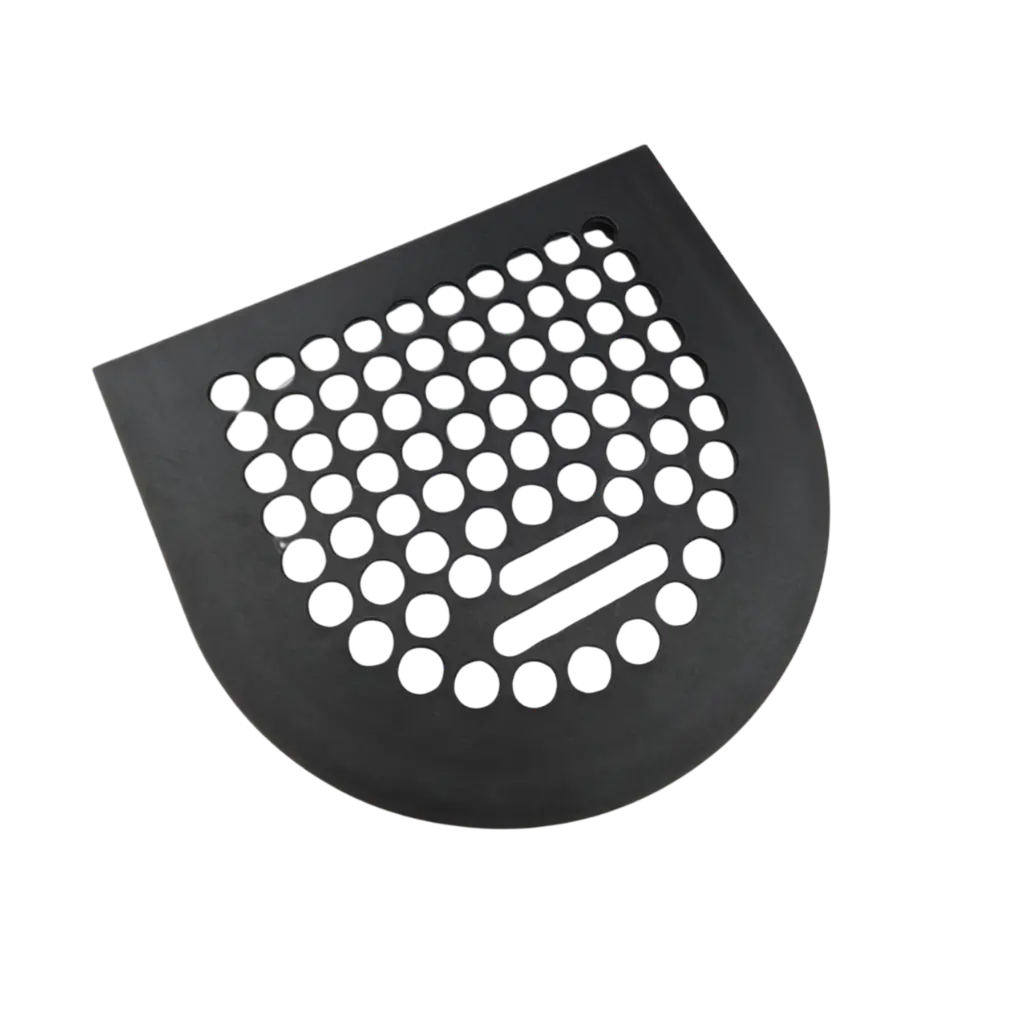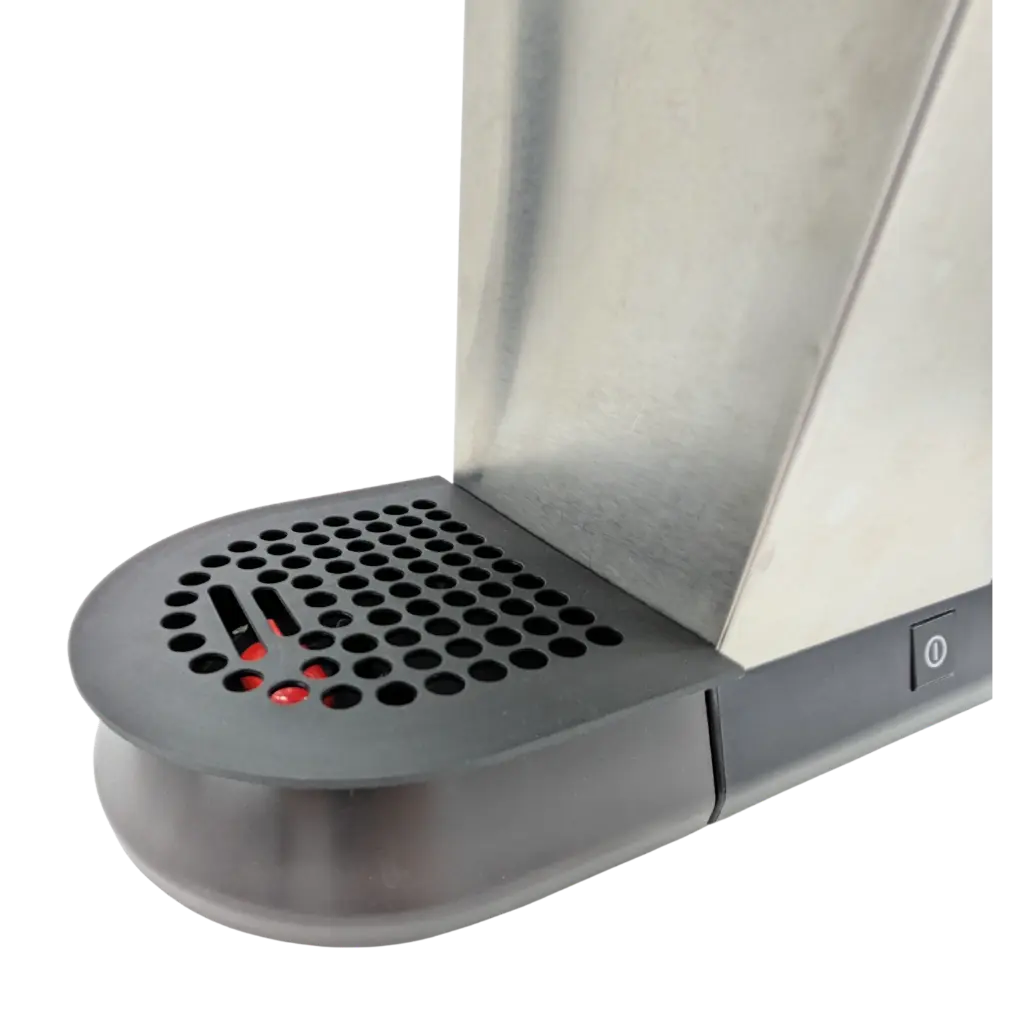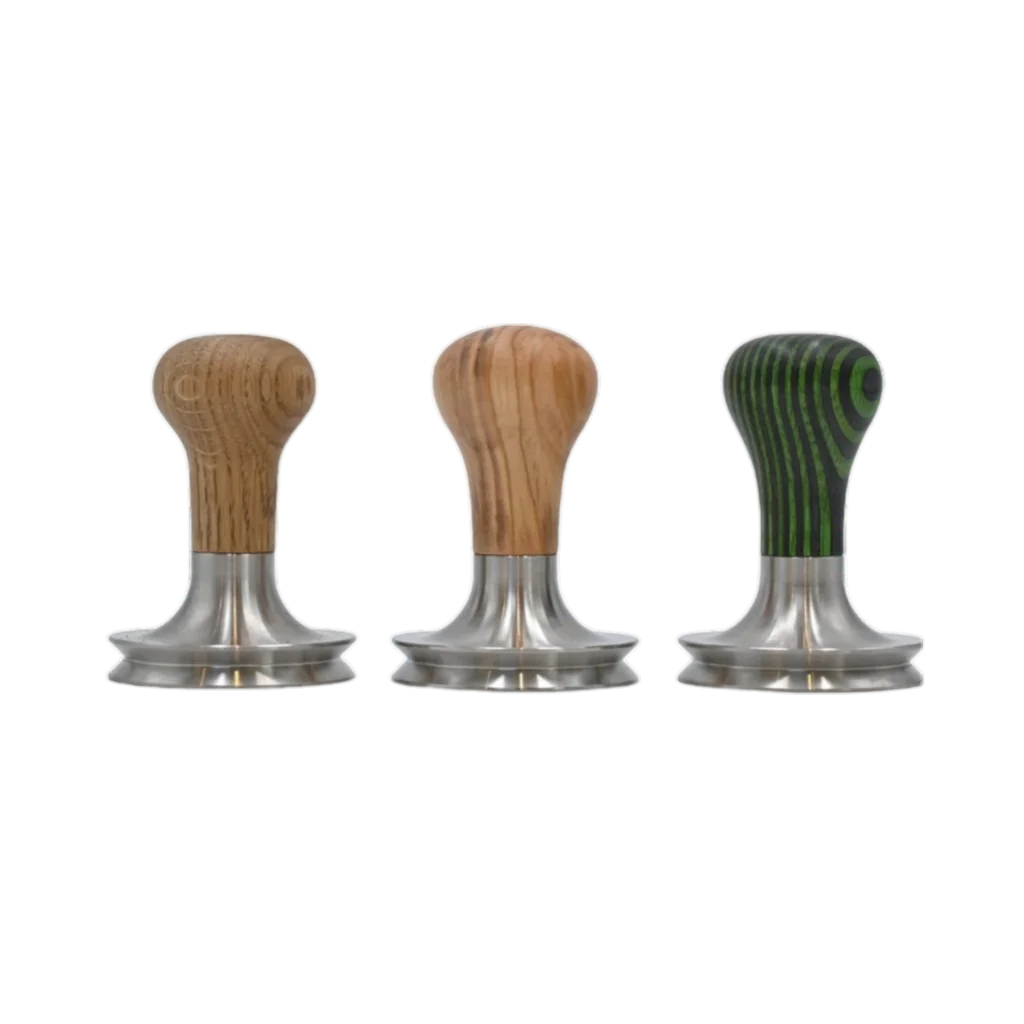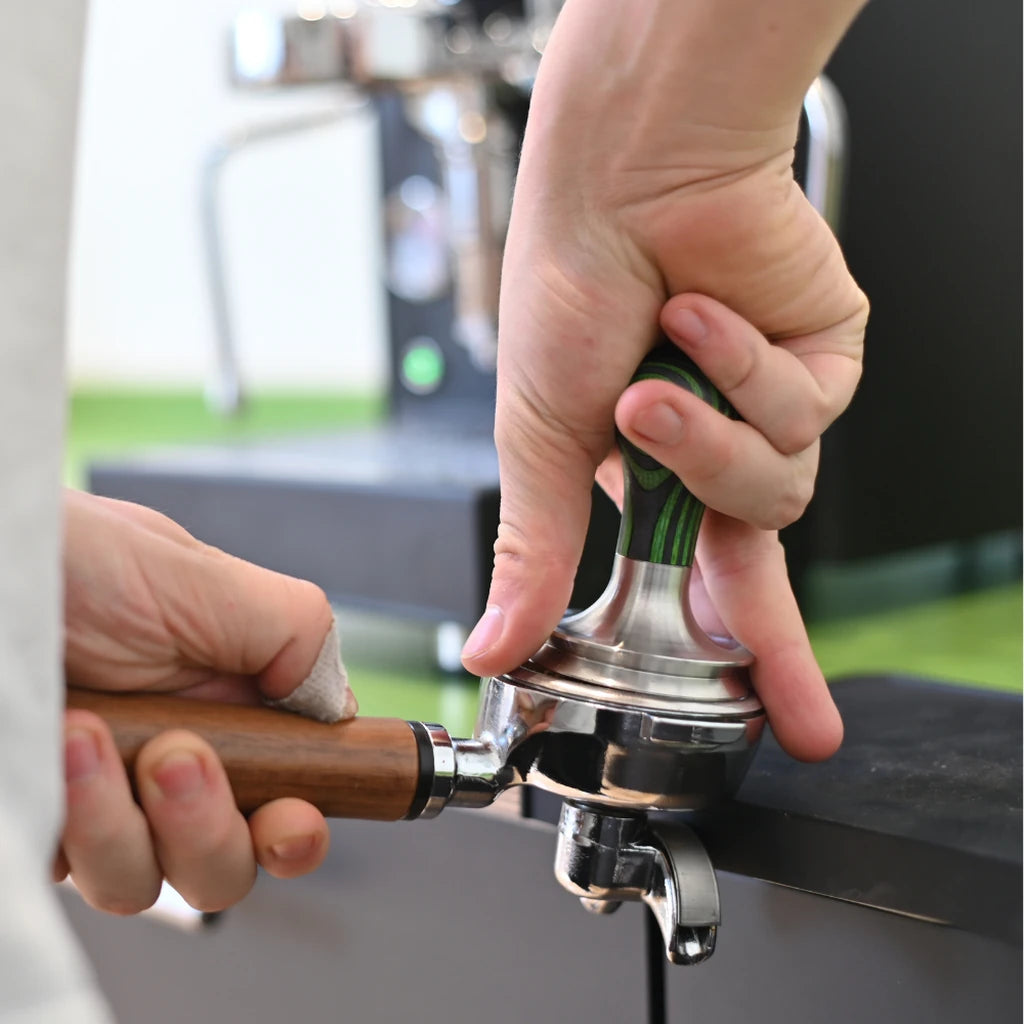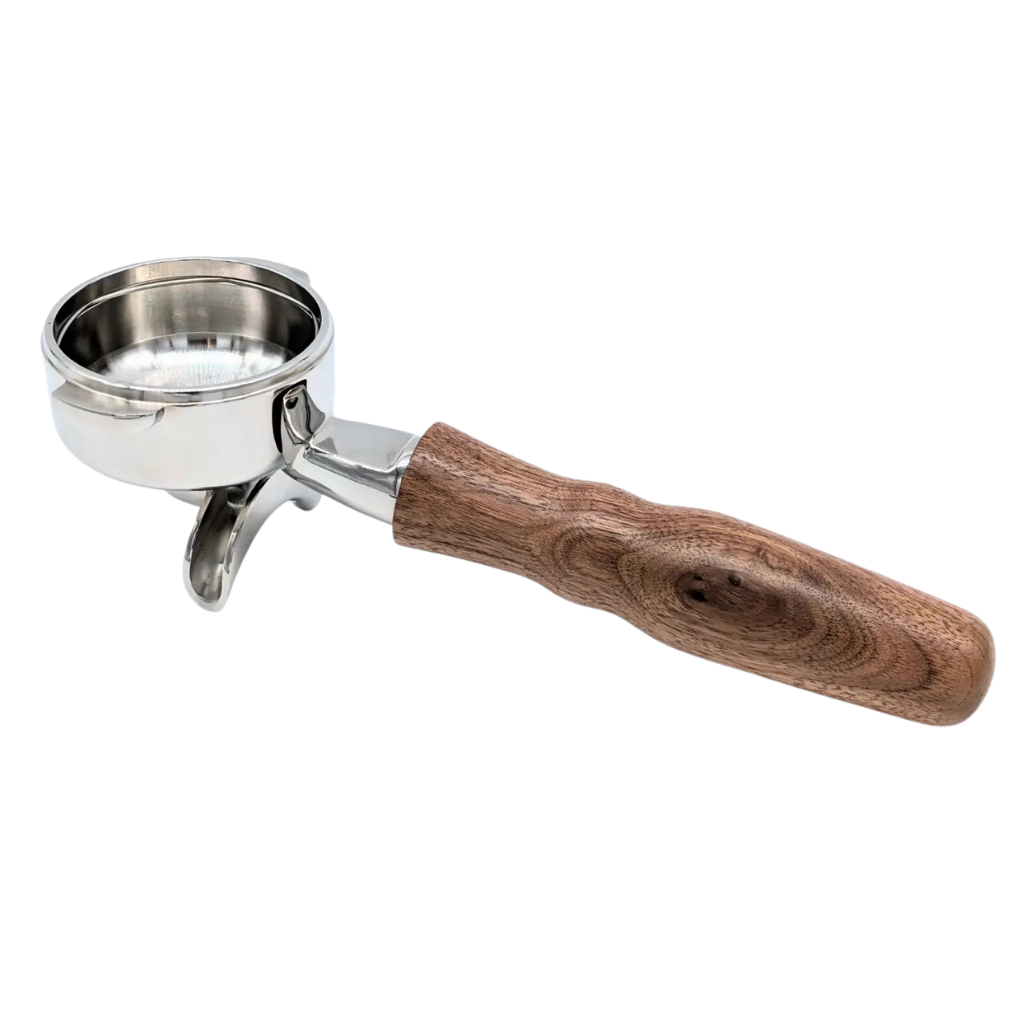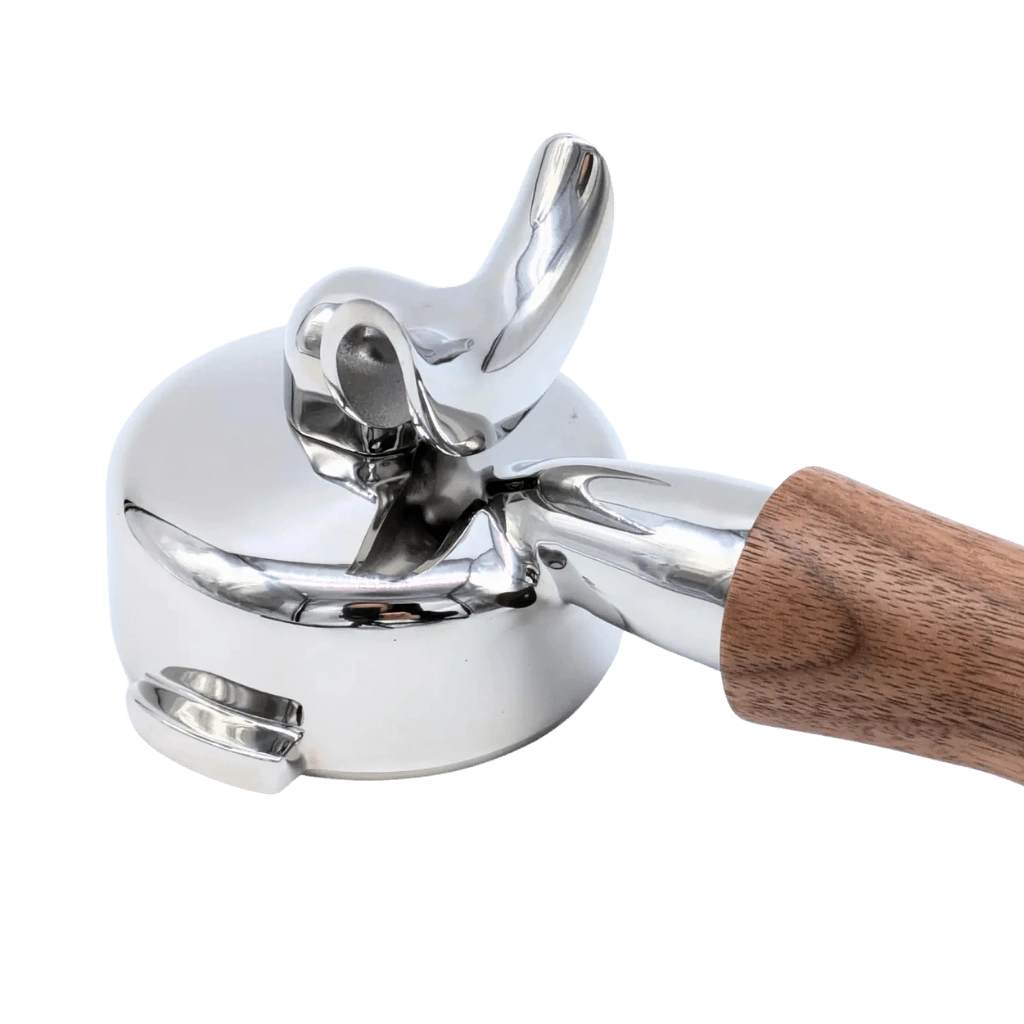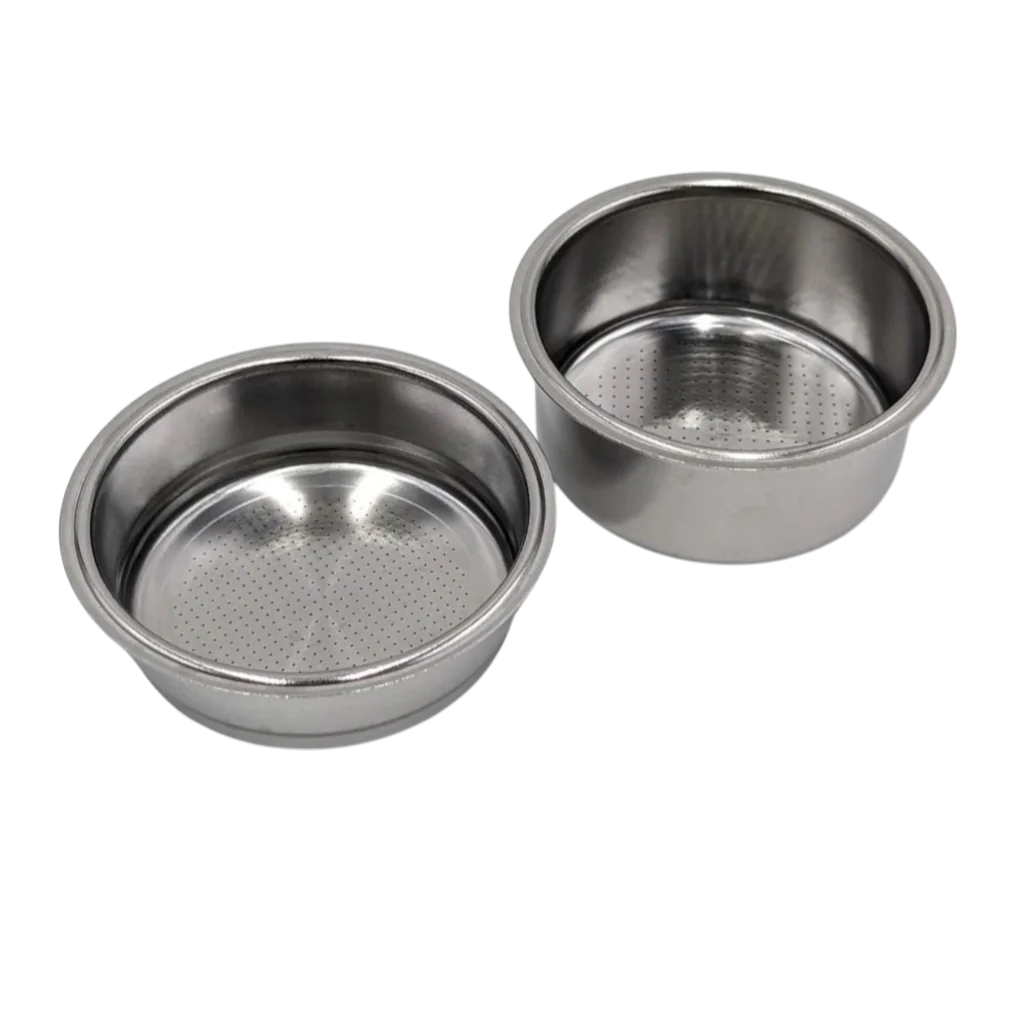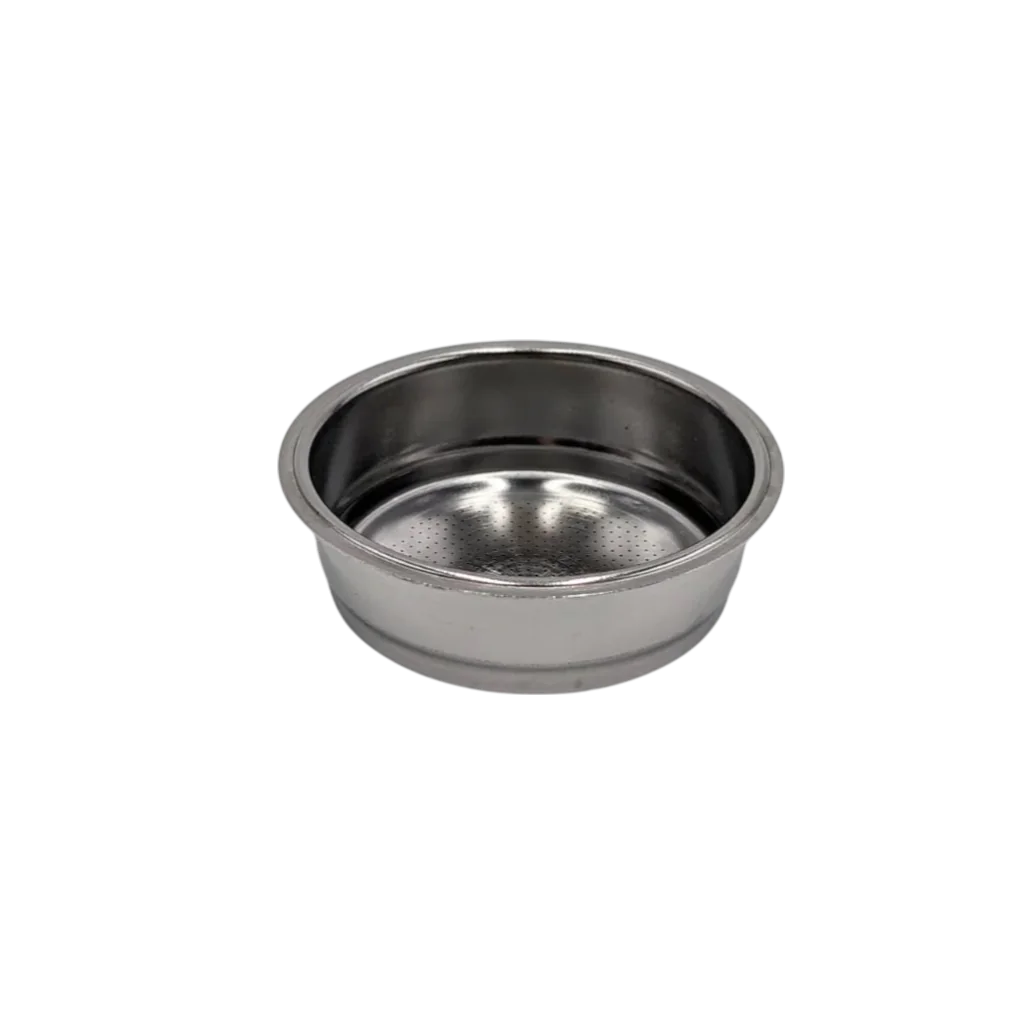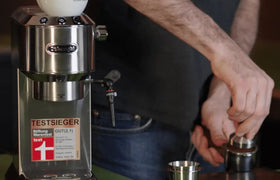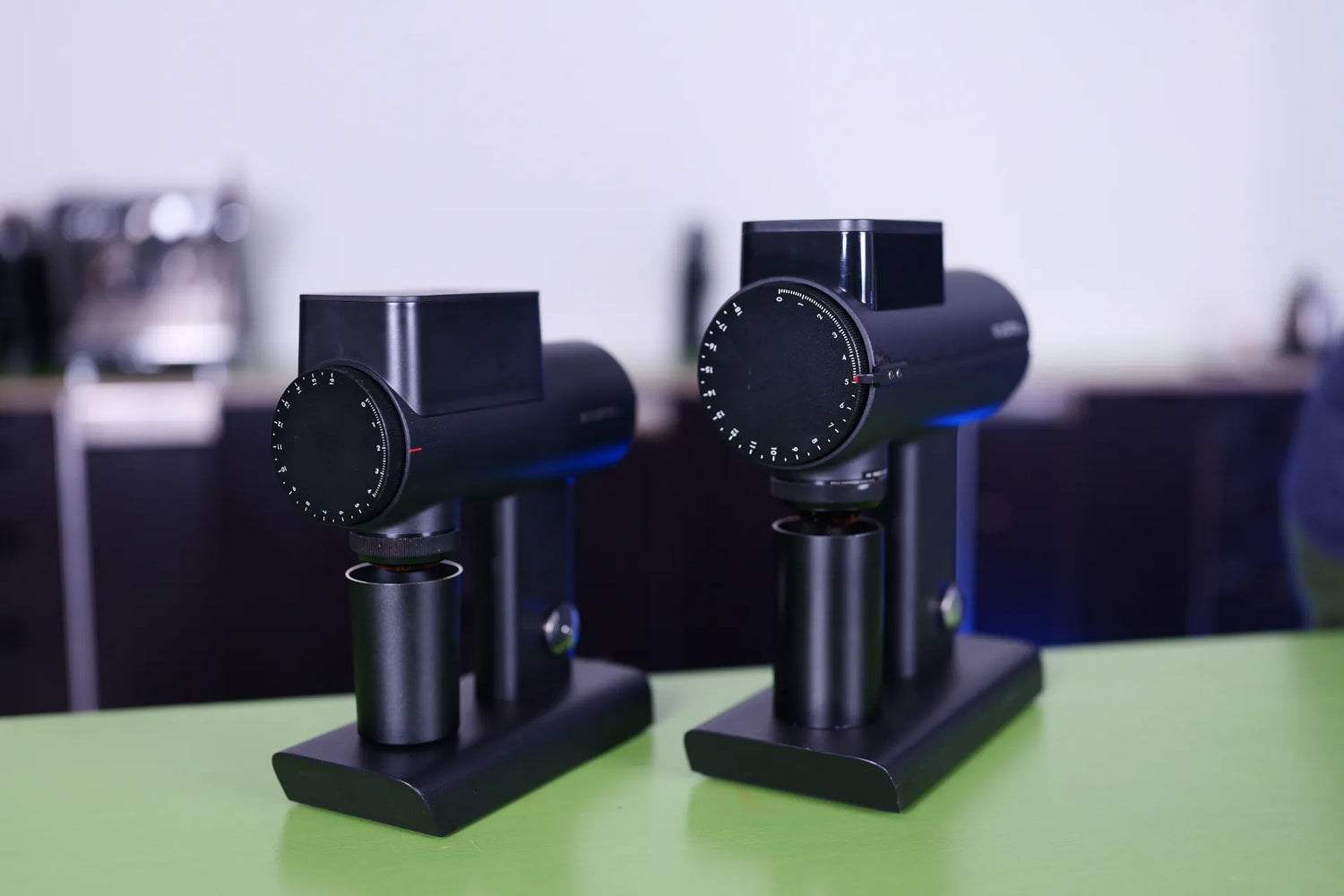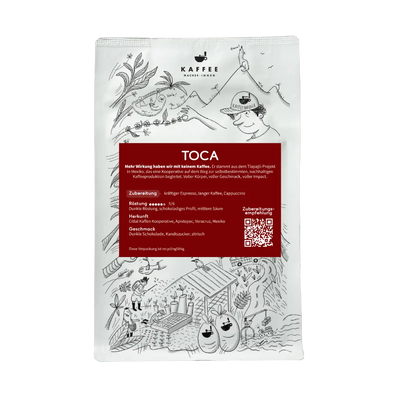The two espresso grinders Sculptor 78s and Sculptor 64s from Timemore leave a very good impression in the test. In the video we discuss both grinders in detail and present their respective strengths and weaknesses. Both Timemore Sculptor grinders are designed as single dosing grinders .
In short: Both deliver extremely reproducible results, with a very narrow main peak in the particle distribution – which is rare, especially in this price range.
Timemore Sculptor Retailer
We search for expert partners for you, from whom we know that they offer good work and good service. We are in close contact with the dealers. These are affiliate links. If you order via this link, it doesn't cost you more, but we get a small commission, which we invest in new test equipment. For the Timemore Sculptor, we would recommend Die Röster .
Design & Processing
Although the 78S and the 64S appear very similar visually, significant differences lie beneath the surface. The 78S is a true powerhouse and weighs almost twice as much as the 64S (3.8 kilograms) at 7.9 kilograms. This discrepancy extends to all components, from the motor and grinding discs to the lid. We find the massive base housing of both mills to be very high-quality, as is the large start button.
The difference in construction is most clearly evident in the motor power and acoustics. The 78S has a 400-watt motor and 78-millimeter grinding discs, while the 64S is equipped with a 150-watt motor and 64-millimeter discs. Although both mills are similarly quiet (78S: 74.9 dB; 64S: 76.7 dB), the sound quality is strikingly different. The 78S sounds rich, pulls the grinding process through in one go and is reminiscent in its acoustics of an "electric car". The 64S, on the other hand, sounds more like a "children's lawnmower" or a "2001 Renault Clio". With dense, light roasts, the 64S noticeably reaches its limits, while the 78S works effortlessly.
In fact, the motorization correlates directly with the grinding speed. The 78S grinds an impressive 21.6 grams in 10 seconds, which is considered fast in the home barista range. The 64S is significantly slower at only 12.4 grams in 10 seconds. The 78S is therefore the more uncompromising choice for baristas who grind extremely dense coffees and expect high torque.
Unfortunately, the discrepancy in material quality is evident in the peripherals, particularly the dosing cup of the 64S. Although the grinding performance of the 64S is sensorially very good – a "toy that works well" – the workmanship of the cup is poor. We criticize the shiny, sharp edge at the top, as it is a roughly cut metal tube that is not even straight. This is an obvious sign of where compromises were made to keep the price down. However, both cups have a useful magnetic function, which works very "smoothly" with the heavier 78S.
Operation & Everyday Usability
Single dosing, as it should be: 18 g in, 18 g out – across all brews. In our tests, there was virtually no variation; one of the lowest dead space measurements we've ever made!
Occasionally, a bean can get stuck on the bean chute during RDT (Rapid Decalcification Technology). Pressing Start-Stop again will dislodge these beans as well. The temperature increase during continuous operation is low.
Speed and volume ( with Apas ) from our measurement report:
- 78S: 21.6 g/10 s, ~14 s for 18 g, 74.9 dB
- 64S: 12.4 g/10 s, ~20.5 s for 18 g, 76.7 dB.
Prices at the time of measurement: approx. €899 (78S) or €699 (64S).
The Dosing Cup: A Workflow Killer
The biggest flaw in the entire everyday workflow is the supplied dosing cup, which in our opinion is "not extraction-promoting". When the cup is directly placed in the portafilter, the thick edge of the cup leaves a ring-shaped "Zermatt-hillscape" on the coffee puck when it is removed.
This uneven distribution at the edge promotes massive channeling, even if we used a precise WDT tool before tamping. Therefore, we had to change our workflow and strongly recommend that users not use the cup directly. Either the coffee must be transferred to a second cup and sieved, or a higher-quality dosing cup must be used to ensure homogeneous distribution in the filter basket. This avoidable detail counteracts the otherwise perfect single-dosing workflow of the grinder and can increase the total cost due to the necessary purchase of a replacement dosing cup.
The single-dosing perfection.
The Sculptor models set new standards for single-dosing performance. The replaceable dead space (temporary retention) is only 0.1 grams. This is by far the best value in our single-dosing comparison. We were able to consistently transfer 18 grams of beans into 18 grams of ground coffee.
This success is due to the vertical arrangement of the grinding discs and the straight, direct grinding path. Furthermore, the mills have a "totally clever mechanism" at the outlet. By turning this wheel, residue and silverskins are removed, effectively emptying the chamber and making a separate blower unnecessary to achieve zero retention. Another factor that enables this low retention is the observed low static charge of the ground coffee. Low static electricity prevents fine particles and coffee dust from sticking to the inner walls. The low temporary dead space is therefore the result of an interplay between a mechanically optimal grinding path and minimized electrostatic adhesion.
Particle distribution measurement and comparison
The Sculptor mills are extremists in terms of particle distribution. They deliver a grinding profile that is unique in our entire test field. The width of the main peak is extremely narrow: the 64S reaches 144 micrometers, the 78S 155 micrometers. These are among the lowest values we have ever measured in a mill test. One could call the main peak a "tower" – a very precise accumulation of particles of the same size.
The Paradox of the Fines
Such a narrow main peak is closely related to the fine fraction. Although the homogeneity of the main particles is very high, the fine fraction below 100 micrometers is almost 30 percent.
Normally, a high proportion of fines would lead to cloudiness or a gritty texture. Here, however, the fines serve a different function: they generate the necessary resistance (puck resistance) against the pump power, as the extremely homogeneous main peak could not achieve this alone. The high clarity that we were able to determine sensorially is due to the fact that the particles of the main peak are extracted almost perfectly, while the fines seal the pores of the coffee puck.
Sensorially, this results in a "very cool blend" of clarity, complexity, and a brilliant texture, as the fine particles can also contribute to the body. The particle distribution of the 64S is even slightly narrower (144 µm), which may explain the higher differentiation in the espresso found in the test.
However, this profile forces the barista to grind very finely, which makes the extraction behavior unpredictable: We often experience a very long pressure build-up (12 to 14 seconds), followed by a rapid shot. Therefore, using these grinders absolutely requires precise puck preparation (WDT) and is best supported by advanced machine technology such as pressure or flow profiles.
- 78S: more differentiation and "juiciness", slightly less body.
- 64S: slightly fuller body, simpler in the aftertaste.
In summary: very good espressos that make the complexity visible and tastable. The particle distribution of both grinders is outstanding, but also demanding. To brew with this narrow main peak, you have to grind very finely. This also means that the puck preparation of the ground coffee must be perfect.
We recommend this grinder to discerning and advanced home baristas who can ideally use pressure or flow profiles with their espresso machine.
Rotation per minute (RPM)
Both grinders offer the possibility to adjust the speed of the grinding discs. This function is specified in RPM (revolutions per minute). We seized the opportunity and conducted several tests with different RPM. We checked the extraction, particle distribution and taste.

The values in the particle distribution measurement do not differ significantly. At a higher RPM of 1400 on the Timemore Sculptor 78s, we measured a slightly narrower main peak (10 micron) and a slightly higher fine particle content (1.4%). This corresponded sensorially, as the infusions tasted clearer and rounder at higher RPM.
We conducted the sensory evaluation of the grinders for espresso using the fastest RPM. We preferred filter coffee made with a lower RPM. We will publish another video review on this.

Comparison in the €500–1000 range
The Timemore Sculptor S models position themselves as the "clarity extremists" in the single-dosing segment between 500 and 1000 Euros. They offer a direct contrast to other dominant grinders on the market. The most obvious contrast is the Niche Zero, which, with its conical burr, is designed for a broader main peak, little fines, and an emphasis on sweetness and body. The Sculptor pursues the opposite goal: maximum clarity and complexity.
| Criterion | Timemore Sculptor S | Niche Zero (Conical) | DF series (flat, 64/83mm) |
|---|---|---|---|
| Grinding wheel profile | Extremely narrow peak (144-155 µm) | Broad peak (approx. 255 µm) [1] | Medium to narrow (depending on the paint disc) |
| Taste | Clarity, complexity, juiciness [1] | Sweetness, Body, Balance [1] | Flexible, playable |
| Retention (Temporary) | Excellent (0.1 g) [1] | Very good (0.2 g) [1] | Good (0.3 g+) [1] |
| Volume | Quiet (~75 dB) [Image 1] | Very quiet (~72 dB) [1] | Medium to loud (DF83V > 90 dB) [1] |
Due to their narrow grind profile, Sculptor grinders require a much finer grind than, for example, the Niche Zero, to achieve the necessary resistance. This demanding extraction behavior, which often leads to a long stall, requires advanced handling of the espresso machine. The Sculptor models are therefore ideal for baristas who are willing to work with complex machines (pressure profiling, flow control) to exploit the full potential of the extremely homogeneous particles.
Conclusion Timemore Sculptor 78s and 64s
The Timemore Sculptor 78S and 64S are technically outstanding devices that impressively demonstrate how mechanical precision can be used to minimize dead space. They do "a lot right" in terms of single-dosing. The strengths of the Sculptor series are undeniable: They deliver best-in-class retention (0.1 g temporarily), excellent grind size reproducibility, and an extremely narrow particle distribution that is unparalleled and allows for maximum clarity in the cup. However, the weaknesses lie in usability: The grind size adjustment on the 64S is somewhat fiddly for precise fine-tuning, and the included dosing cup is a "workflow killer" that, due to its design, provokes channeling at the edge of the coffee puck. We clearly classify these grinders as "nerd gear" for the advanced home barista. They are not for beginners looking for simple, forgiving operation.
- The Sculptor 78S: It's the uncompromising choice. The 400-watt motor delivers the necessary speed and robustness for dense roasts. If you want maximum performance, speed, and a robust design, choose the 78S.
- The Sculptor 64S: It's the surprise in the cup. For less money, it delivers almost the same (minimally differentiated) cup quality as the 78S. You just have to accept the lower speed (12.4 g/10s) and the weaker motor. Those who seek the absolute maximum clarity in the ground coffee and are willing to replace the dosing cup and work in a focused manner will find the 64S the most affordable entry into this high-end segment.
The Timemore Sculptor series proves that it is possible to design single-dosing grinders with virtually zero retention, setting a new, high standard for future devices in the high-end segment.












